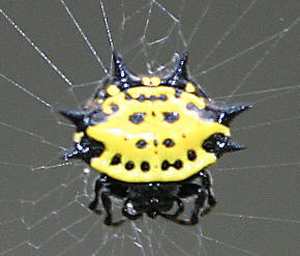

MedFriendly®


Acantha
Acantha means a) a spine, b) sharp spiny part, or c)
the spiny process of a vertebra. Vertebrae are bones
that form an opening in which the spinal cord passes.
Many insects contain spiny processes known as
acanthae (plural form) on the outside and inside of
their bodies. For example, acanthae are present in a
moth’s reproductive system and on the sticky foot
pads of flies. The shapes of acanthae can be
bifurcated (divided into two branches), have straight
tips, bent tips, can be fringed and slender, or can be
comb-shaped.
Acanthae on the star spider.
FEATURED BOOK: Clinical Anatomy of the Spine and Spinal Cord
There are numerous animals with acanthae (spiny processes) on their bodies besides
insects, the most well-known of which are porcupines (with the sharp spiny parts known
as quills) and sea urchins (with the sharp parts known as spines). These acanthae
provide a protective purpose. The stingray has a barbed spine and thus there are
numerous spinous processes present. These spinous processes can be deadly, such as
when one caused the death of The Crocodile Hunter, Steve Irwin.
In botany (plant science), the prickly part of a thorny plant is referred to as acantha, In
fact, there is a plant known as the acanthus plant which has spiny leaves and flower
spikes. Some types of pine trees are particularly spiky. Acantha comes from the Greek
word “akantha” meaning “a thorn.”
"Where Medical Information is Easy to Understand"™
















